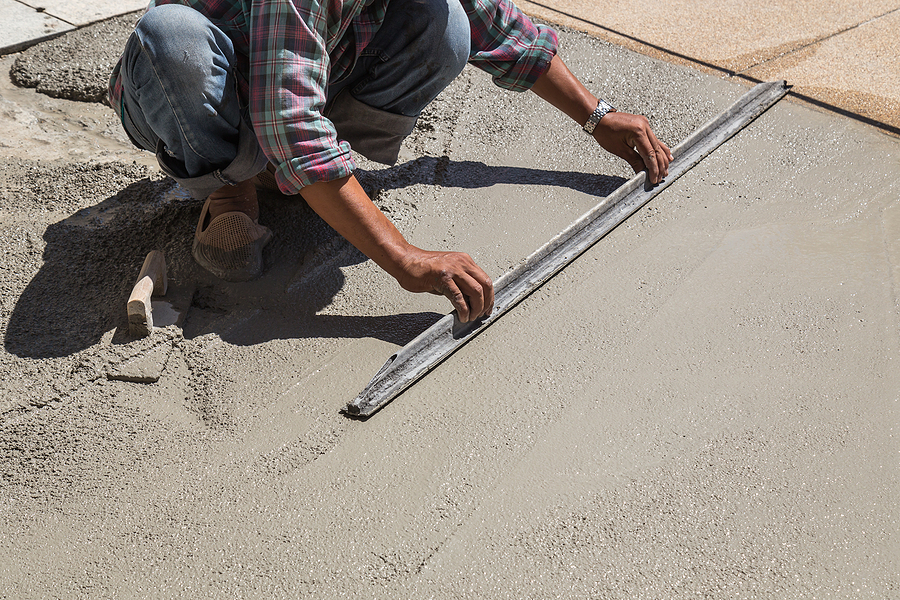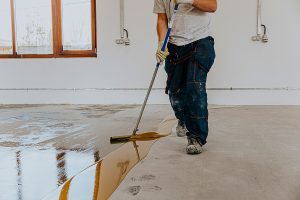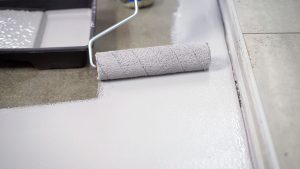Concrete floors are known for their strength, durability, and versatility. But even the toughest floors have a natural enemy: moisture. Without proper protection, moisture can wreak havoc on your beautiful concrete surface, leading to costly repairs, unsightly damage, and even structural issues. Fortunately, moisture barrier installation is a proven solution that can save your floors — and your wallet — from major headaches.
In this post, we’ll explore why moisture control matters, how it plays a vital role in preventing floor damage with moisture control, and why it’s a smart companion to concrete floor polishing for long-term performance.
Why Moisture Is a Big Problem for Concrete Floors
At first glance, concrete looks solid and impenetrable. But it’s actually quite porous. Like a giant sponge, concrete can absorb moisture from below or above the surface. This trapped water causes all kinds of trouble, such as:
Cracking
As moisture moves through concrete, it can create expansion and contraction cycles that lead to cracks.
Mold and Mildew Growth
Damp concrete creates a perfect breeding ground for mold, mildew, and bacteria.
Flooring Failure
If you’re installing flooring materials (like hardwood, tile, or carpet) over concrete, excessive moisture can cause adhesives to fail, wood to warp, and tiles to lift.
Staining and Discoloration
Moisture can carry salts and minerals to the surface, leaving behind ugly stains called efflorescence.
Moisture-related flooring failures cost the construction industry over $1 billion annually. That’s a staggering number — and a powerful reason to take moisture seriously when finishing or renovating your floors.
What Is Moisture Barrier Installation?
Moisture barrier installation involves applying a protective layer that blocks water vapor from passing through the concrete slab. It can take several forms, such as:
- Sheet Barriers: Heavy-duty plastic sheeting placed underneath concrete slabs during construction.
- Liquid Sealers: Roll-on or spray-on coatings that create an impermeable membrane over cured concrete.
- Epoxy Moisture Barriers: Thick, two-part systems that not only block moisture but also prep the surface for concrete floor polishing or other finishes.
The goal is simple: stop moisture at the source before it has a chance to cause damage.
How Moisture Barrier Installation Protects Your Investment
Whether you’re installing a new floor or refreshing an existing one, preventing floor damage with moisture control should be a top priority.
Here’s how moisture barriers make a huge difference:
Prevent Structural Cracks
When water seeps into concrete, it can freeze and expand (especially in colder climates), causing serious cracks over time. A moisture barrier keeps water out, preserving the structural integrity of your floor.
Reduce Mold and Mildew
Mold doesn’t just smell bad — it can cause real health problems like allergies and respiratory issues. By keeping moisture at bay, you eliminate the conditions that mold needs to grow.
Protect Decorative Finishes
Many homeowners and businesses invest in concrete floor polishing to achieve a beautiful, glossy finish. Without proper moisture control, though, that polished look can be quickly ruined by staining, pitting, or lifting finishes. A moisture barrier helps maintain the polished shine and durability for years to come.
Save Money on Repairs
Fixing moisture-related damage after the fact is always more expensive than preventing it. A proper moisture barrier can save you thousands in future repairs and replacements.
Moisture Barrier Installation + Concrete Floor Polishing = The Perfect Pair
If you’re planning to upgrade your floors with concrete floor polishing, now is the ideal time to consider moisture barrier installation.
Polishing concrete involves grinding down the surface and applying densifiers and sealers to create a smooth, reflective finish. But polishing without addressing underlying moisture issues is like painting over a rusted car — it might look good temporarily, but problems will surface sooner rather than later.
When a moisture barrier is installed before polishing, you’re setting your floor up for maximum longevity and beauty. The barrier ensures that water vapor doesn’t push up through the slab and disrupt the polished surface.
Signs You Might Need a Moisture Barrier
Not sure if your concrete floor needs moisture control? Look for these warning signs:
- Damp or dark spots on the surface
- Efflorescence (white powdery residue)
- Musty odors in the room
- Flooring materials, lifting or warping
- Visible mold or mildew around the perimeter
If you notice any of these signs, it’s a good idea to contact a flooring professional for an assessment.
Best Practices for Moisture Barrier Installation
Moisture barrier installation is a critical step, and doing it right matters. Here are some best practices:
Test for Moisture
Before installing a barrier, use tools like calcium chloride tests or relative humidity probes to measure how much moisture is coming through the slab.
Choose the Right Product
Different moisture barriers are designed for different needs. Work with a trusted professional to select the best option for your space.
Ensure Proper Application
Liquid barriers must be applied at the correct thickness, and sheet barriers must be installed without gaps or tears.
Allow for Cure Time
After applying a liquid barrier, it’s crucial to allow it to cure fully before proceeding with finishes like polishing or installing flooring.
A rushed or sloppy installation can lead to problems down the line, so it’s worth hiring a team that specializes in both moisture control and concrete floor polishing.
Concrete Moisture Can Take Months to Settle
Here’s a surprising reality: Concrete doesn’t fully dry when it hardens — it cures. And that curing process can take a long time. In fact, according to the Portland Cement Association, concrete continues to hydrate (i.e., chemically react with water) and gain strength for months — sometimes even years — after it’s poured.
This is why moisture testing and barrier installation are crucial steps, even for slabs that might seem “old” or “dry.”
Protect Your Floors the Right Way
Don’t leave your floors vulnerable to the invisible enemy of moisture. Whether you’re building new, renovating, or adding a polished finish, moisture barrier installation is a smart investment in your property’s longevity and beauty.
Combining moisture control with professional concrete floor polishing ensures that your floors not only look stunning but also stand the test of time.
Ready to safeguard your concrete floors?
Contact Custom Concrete Prep & Polish today for expert help with moisture barrier installation, concrete floor polishing, and all your surface preparation needs!



